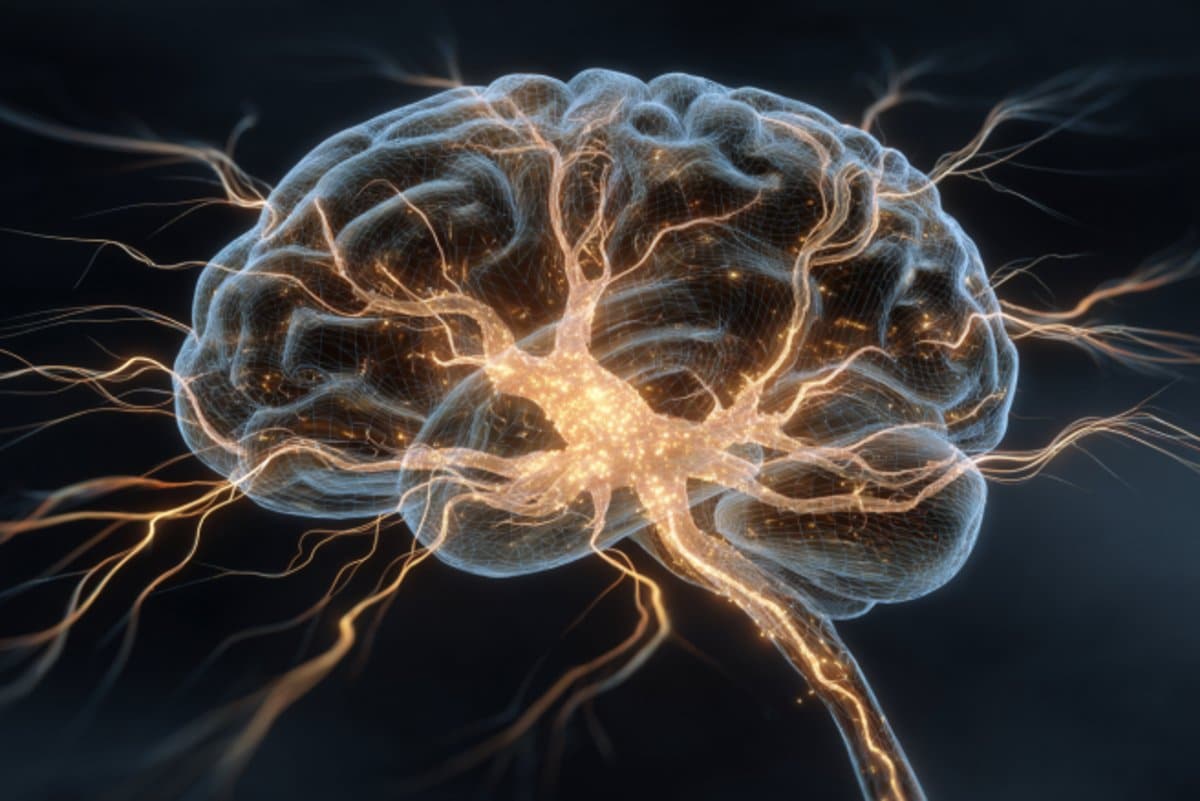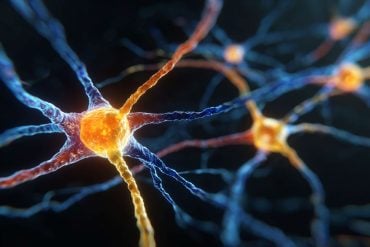Summary: Researchers uncovered a new subtype of hypothalamic neurons, called Crabp1 neurons, that serve as powerful regulators of energy expenditure. Silencing these cells lowered activity, temperature, and fat burning, leading to obesity, while activating them increased locomotion, thermogenesis, and resistance to diet-induced weight gain.
These neurons respond to environmental cues like cold, exercise, and light exposure, linking lifestyle factors to metabolic health. The findings introduce a new “mirror-imbalance” model of energy balance and provide promising targets for treating obesity and related disorders.
Key Facts
- Crabp1 Neurons: Newly identified hypothalamic neurons that regulate energy expenditure.
- Metabolic Impact: Activation boosts activity and thermogenesis; silencing promotes obesity.
- Environmental Link: Cold and exercise activate these neurons, while light exposure suppresses them.
Source: Chinese Academy of Science
In a new discovery, researchers from the Institute of Genetics and Developmental Biology of the Chinese Academy of Sciences have identified a previously underexplored population of hypothalamic neurons that plays a pivotal role in regulating energy expenditure.
Their findings, published online in Neuron on September 17, uncover a critical neural basis for energy balance and open new avenues for tackling obesity and related metabolic disorders.

Obesity is one of the most pressing global health challenges and arises from chronic imbalances between energy intake and expenditure.
Although traditional approaches, such as dietary restriction and GLP-1 receptor agonists, can produce short-term weight loss, weight regain and the limited long-term effectiveness of these methods remain significant challenges. This underscores the urgent need for strategies that promote energy expenditure rather than merely suppressing food intake.
However, the neural mechanisms underlying energy expenditure have remained poorly defined.
To address this gap, Professor WU Qingfeng’s team focused on the arcuate nucleus (ARC) of the hypothalamus, a central hub for metabolic regulation.
Within the ARC, two well-characterized neuronal populations—pro-opiomelanocortin (POMC) neurons and agouti-related peptide (AgRP) neurons—have long been considered the primary regulators of food intake and energy expenditure.
While studies on these two cell types have dominated the field for decades, they do not capture the full diversity and complexity of other ARC neuronal populations that remain functionally unexplored.
Using cutting-edge single-cell transcriptomics, in situ hybridization, and circuit-mapping techniques, the researchers identified a new GABAergic neuronal subtype defined by Crabp1 expression.
These Crabp1 neurons exhibit distinct molecular profiles with minimal overlap with POMC, AgRP, and other known ARC subtypes, and are functionally enriched in pathways related to cell adhesion, retinoic acid metabolism, thyroid hormone signaling, and neurotransmitter receptor activity.
Functional studies demonstrated that Crabp1 neurons act as critical regulators of energy homeostasis. Silencing these neurons resulted in reduced energy expenditure, lower physical activity, decreased core body temperature, impaired brown fat thermogenesis, and ultimately the development of obesity.
In contrast, chemogenetic or optogenetic activation of Crabp1 neurons robustly enhanced locomotor activity, increased thermogenesis, and protected animals from high-fat diet-induced weight gain.
These findings highlight Crabp1 neurons as a unique regulatory hub that simultaneously influences energy expenditure, offering a mechanistic explanation for how energy balance can be disrupted or restored.
By proposing a new “mirror-imbalance” model, in contrast to the traditional “seesaw model” dominated by AgRP and POMC neurons, the researchers introduced a fresh conceptual framework for energy balance regulation.
Building on these findings, they mapped the circuit of Crabp1 neurons to understand how they exert their effects on energy expenditure.
Using viral tracing, electrophysiology, and high-resolution whole-brain imaging, they uncovered an extensive “one-to-many” projection pattern: Crabp1 neurons send collateral branches to multiple downstream targets, including the paraventricular nucleus of the hypothalamus, the dorsomedial hypothalamus, the laterall hypothalamus, and the preoptic area of the hypothalamus.
Circuit manipulations revealed that this distributed wiring enables Crabp1 neurons to coordinate key aspects of energy expenditure.
Beyond shedding light on intrinsic metabolic control, the study also reveals how environmental factors and physiological states influence neuronal activity, ultimately shaping the energy balance.
For example, cold exposure and physical exercise strongly activated Crabp1 neurons, driving increased energy expenditure to support thermogenesis and activity.
Conversely, prolonged light exposure suppressed Crabp1 neuronal activity through the retinohypothalamic pathway, resulting in reduced energy expenditure and weight gain.
These results reveal a neural mechanism linking lifestyle and environmental disruptions, such as light pollution, to the rising prevalence of obesity and metabolic disease in modern societies.
This study identifies Crabp1 neurons as the neural basis for regulating energy expenditure and proposes a mirror-imbalance model in which hypothalamic neurons integrate environmental stimuli to cope with adverse conditions.
Elucidating their molecular and circuit profiles may open an alternative avenue for preventing metabolic disorders.
About this neuroscience research news
Author: WU Qingfeng
Source: Chinese Academy of Science
Contact: WU Qingfeng – Chinese Academy of Science
Image: The image is credited to Neuroscience News
Original Research: Open access.
“Identification of a neural basis for energy expenditure in the mouse arcuate hypothalamus” by WU Qingfeng et al. Neuron
Abstract
Identification of a neural basis for energy expenditure in the mouse arcuate hypothalamus
Given the evolutionary instinct for caloric intake and frequent weight rebound after diet or drug cessation, increasing energy expenditure emerges as an alternative obesity treatment.
Environmental cues such as cold and seasonal light prompt the brain to adjust energy expenditure, yet the coordinating neural mechanisms remain poorly understood.
Here, we identify a hypothalamic GABAergic neuronal subtype, marked by Crabp1, that targets multiple nuclei to regulate energy expenditure in mice.
Silencing Crabp1 neurons reduces physical activity, body temperature, and adaptive thermogenesis, leading to obesity, whereas activation increases energy expenditure and mitigates diet-induced obesity.
Structural and functional analyses reveal that Crabp1 neurons promote energy metabolism through a “one-to-many” projection pattern.
While Crabp1 neurons are activated by cold exposure and physical activity, prolonged light exposure abrogates their firing, which mediates light-induced metabolic disorder.
Together, we reveal a neural basis that integrates various physiological and environmental stimuli to control energy expenditure and body weight.






